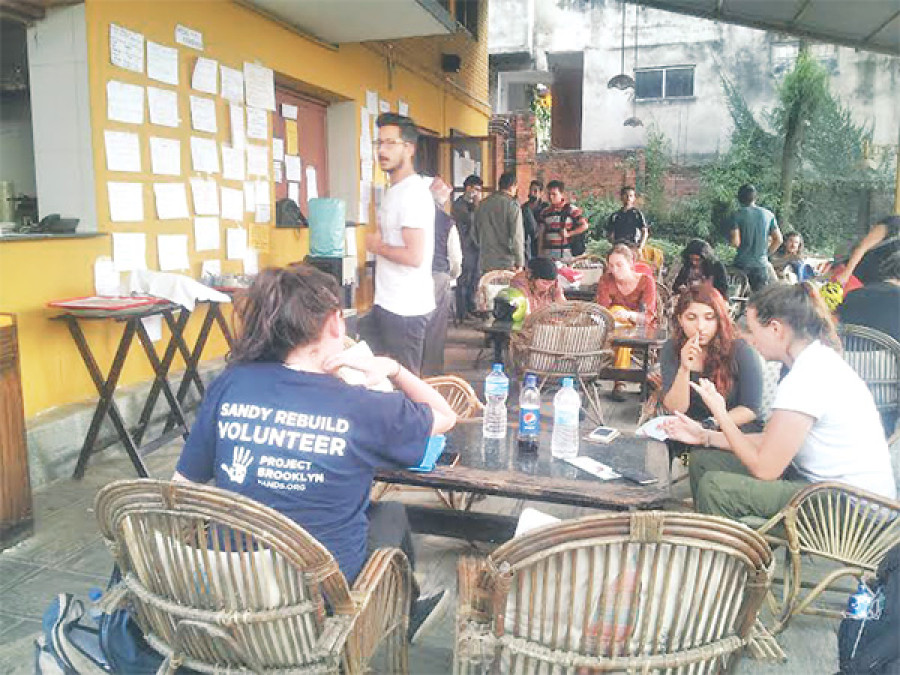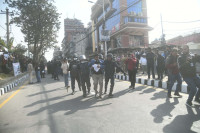Opinion
In whom we trust
The government must go out of its way to win the trust of the donors and the people
Sophia K Tamot
One undisputable feature the earthquake tragedy has unleashed is human benevolence. There is no denying that this has been extended visibly and in ample amounts from all quarters and strata of society.
However, along with these welcome acts of kindness, there has also evolved a growing class of those who seem to lose no opportunity to capture each display of their generous act on camera and share them with the world to see on social media.
Working silently
While traditional and social media have contributed significantly in terms of reaching out globally, this has also become a platform to promote oneself. Some individuals seem to be jumping at every opportunity they can get, just to be seen as benevolent, and newspapers have motivated this trend by allotting space to press conferences aimed at relief fund raisers. Naturally, those that are pro publicity have been effectively utilising the media to promote their own contributions.
We have seen billionaire residents as well as non-resident Nepalis organise press meets to announce their contributions in cash or kind. Photos and news of politicians and bureaucrats cleaning debris or forming committees to deal with the aftermath also found significant space in the media. Celebrities in turn have been captured on camera—primed and prepped—doling out a packet of instant noodles and a bottle of mineral water, all in the name of earthquake relief.
What the press have left out on the other end of the spectrum are those groups that have been relentlessly and tirelessly working, either to raise funds or getting their hands dirty—diligently distributing relief to the needy and continuing to contribute each day. These groups are present in almost each and every private and public agency, family, or community. Many do what they can from early morning until before they begin their office duty and at the end of the day, resume where they left off. For
example, apart from one or two newspaper snippets, we have hardly read of the Yellow House in Sanepa becoming the prime base for volunteers to gather, coordinate relief efforts, and dispatch materials to various locations. And this is just one example, one story, of pure benevolence.
Under normal circumstances, the real leader to direct and coordinate all relief operations is generally the government. But even our government knows that it cannot and will not be able to lead all efforts singlehandedly. As a country that is heavily dependent on donor money, criticised for rampant corruption and its slow and ineffective bureaucracy, how can it?
Haphazard help
Three weeks have passed since the first big earthquake. As aftershocks continue, already weakened structures are at risk of falling and the public’s mental trauma is at risk of increasing to dangerous levels. Several reports indicate that many villages in the 14 disaster-stricken districts have yet to receive any form of aid or relief. Meanwhile, 400 Nepal Army personnel were deployed for four days to look for a missing American chopper.
Let me recount a recent episode at a remote village behind Lele in Lalitpur. A group of local leaders went to the area to distribute relief materials. But instead of being thanked, they were beaten to a pulp. That was the villagers’ way of thanking them for doing nothing for almost three weeks. Public frustration is apparent and mounting. Constituent Assembly (CA) members have already felt the wrath of angry locals. Those elected representatives that had taken a tad too long to visit their constituencies have returned insulted and threatened.
What does all this tell us of the relief efforts being undertaken so far—by the government, the Army, the donor community as well as the relief organisations?
That it lacks effective coordination would simply be an understatement. Truth is, all the relief efforts, the way, and the rate at which they are being carried out is simply too haphazard, too small, too slow, and too short-sighted.
Never before has government-donor relations been at such a record low. In the aftermath of the disaster, the government made it clear that it would like donors to channel all aid money through a one-window mechanism. But donors have been unwilling to cooperate, given their risk averse preference to have full control and visibility over where their money is spent.
Check and balance
Incidents like the one when some CA members received tarpaulins and where the Speaker Subash Nembang had to intervene should have been averted. Leaders favouring their constituency rather than those that are in need is no longer a secret. But despite the donors’ valid concerns, the government’s proposal makes sense, especially in the imminent longer term. Haiti’s case shows that spending billions of dollars through I/NGOs or private consulting firms is not a sustainable solution. Donors will have to work with the government, but what the latter has to do is immediately undertake key measures to address the lack of transparency, accountability, and efficiency that has left the system tainted and disfigured.
There is very little time to bring about a policy change, but the government can take a few immediate measures. Passing a resolution through the Cabinet that will allow much needed transparency in the making and spending of public finances can be a start. Mobilising bureaucrats to deliver relief parcels is not an effective way to demonstrate transparency, accountability, or effectiveness when the content of the parcels itself is inadequate or past their expiry date. It is not business as usual and the clock is ticking. The government must go out of its way to win the trust of the donors and the people.
The media, as the fourth estate, must also do its part. It has to go beyond fund raising and reporting about shortcomings, loopholes, and problems. It must be a part of the solution by partnering with government and existing relief organisations—not its own—to assess community needs and match them with relevant agencies before tracking, monitoring, and reporting on relief operations to bring the government and the donors to work together, and fast.




 10.12°C Kathmandu
10.12°C Kathmandu










